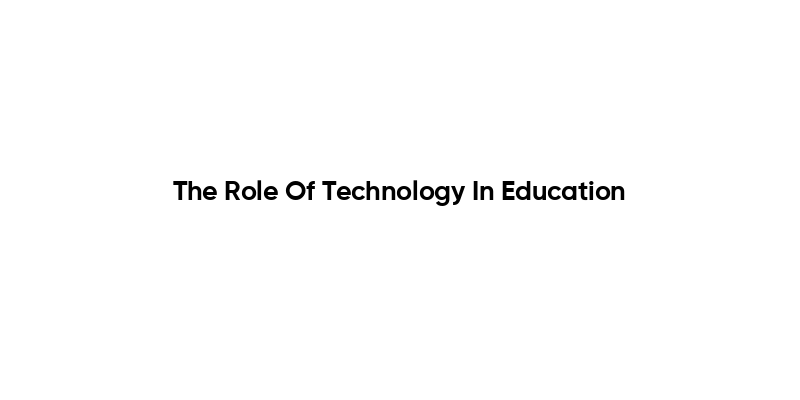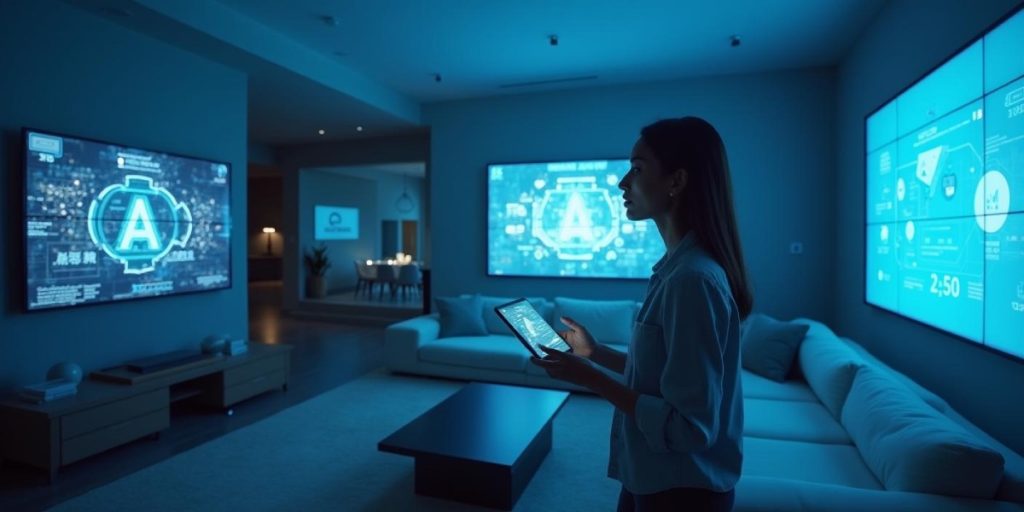In today’s rapidly evolving world, the role of technology in education has become increasingly significant. From interactive learning platforms to virtual classrooms, technology is reshaping how students and educators engage with knowledge. This transformation not only enhances the learning experience but also makes education more accessible to diverse populations. As we delve deeper into this topic, we will explore various aspects of how technology is revolutionizing education, making it a vital component of modern learning environments.
Throughout this article, you will discover the myriad ways technology is being integrated into educational settings. We will discuss the benefits of online learning tools, the impact of artificial intelligence on personalized education, and how digital resources are fostering collaboration among students and teachers. Additionally, we will examine the challenges that come with this technological shift and how institutions are addressing them to ensure a balanced approach to education.
As you continue reading, you will gain insights into the future of education and the pivotal role technology will play in shaping it. Whether you are an educator, a student, or simply someone interested in the evolution of learning, this exploration will provide you with valuable knowledge and perspectives. Join us on this journey to understand how technology is not just a tool, but a catalyst for change in the educational landscape.
Enhancing Learning Experiences through Interactive Tools
Technology has revolutionized the way students engage with educational content. Interactive tools such as smartboards, educational apps, and virtual reality environments provide immersive learning experiences that traditional methods cannot match. These tools encourage active participation, allowing students to explore concepts in a hands-on manner, which can lead to better retention of information.
Moreover, interactive tools cater to various learning styles, making education more inclusive. Visual learners benefit from graphics and videos, while kinesthetic learners can engage with simulations and interactive exercises. This adaptability not only enhances understanding but also fosters a love for learning, as students find joy in exploring subjects through technology.
The Impact of Online Learning Platforms
Online learning platforms have transformed education by providing access to a wealth of resources and courses from around the globe. Platforms like Coursera, edX, and Khan Academy offer students the opportunity to learn at their own pace, making education more flexible and accessible. This democratization of knowledge allows individuals from diverse backgrounds to pursue their educational goals without geographical constraints.
Additionally, online learning fosters self-directed learning, encouraging students to take charge of their education. With a plethora of courses available, learners can tailor their educational journey to fit their interests and career aspirations. This shift towards personalized learning experiences is a significant advantage of technology in education, promoting lifelong learning and adaptability in an ever-changing job market.
Facilitating Collaboration and Communication
Technology has made collaboration and communication among students and educators more efficient than ever. Tools like Google Classroom, Microsoft Teams, and Slack enable seamless interaction, allowing students to work together on projects regardless of their physical location. This fosters a sense of community and teamwork, essential skills in today’s interconnected world.
Furthermore, technology facilitates communication between teachers and students, providing platforms for feedback and support. Educators can easily share resources, assign tasks, and monitor progress, ensuring that students receive the guidance they need. This enhanced communication not only improves academic performance but also builds strong relationships within the educational environment.
Data-Driven Insights for Personalized Learning
The integration of technology in education allows for the collection and analysis of data, providing valuable insights into student performance. Learning management systems (LMS) can track progress, identify strengths and weaknesses, and suggest personalized learning paths. This data-driven approach enables educators to tailor their teaching strategies to meet the unique needs of each student.
By leveraging analytics, teachers can implement targeted interventions, ensuring that no student is left behind. This personalized approach not only enhances academic outcomes but also boosts student confidence and motivation. As technology continues to evolve, the potential for data-driven insights in education will only grow, paving the way for more effective teaching and learning experiences.
Preparing Students for a Technology-Driven Future
As technology becomes increasingly integrated into various industries, it is essential for education systems to prepare students for a technology-driven future. Incorporating coding, digital literacy, and critical thinking into the curriculum equips students with the skills necessary to thrive in the modern workforce. By embracing technology in education, schools can foster innovation and creativity among students.
Moreover, exposure to technology in the classroom helps students develop adaptability and problem-solving skills, essential traits in a rapidly changing job market. As they learn to navigate digital tools and platforms, students become more proficient and confident in their abilities, preparing them for future challenges and opportunities in their careers.
| Aspect | Description |
|---|---|
| Enhanced Learning Experience | Technology provides interactive and engaging learning experiences through multimedia resources, simulations, and gamified learning. |
| Access to Information | Students can access a vast amount of information and resources online, enabling self-directed learning and research. |
| Collaboration Tools | Technology facilitates collaboration among students and teachers through tools like video conferencing, shared documents, and online forums. |
| Personalized Learning | Adaptive learning technologies allow for personalized education experiences tailored to individual student needs and learning paces. |
| Distance Learning | Online education platforms enable students to learn from anywhere, breaking geographical barriers and providing flexibility. |
| Assessment and Feedback | Technology allows for immediate feedback through online quizzes and assessments, helping students understand their progress in real-time. |
| Teacher Resources | Educators can utilize various digital tools and resources to enhance their teaching methods and manage classroom activities more effectively. |
| Skill Development | Students develop essential digital skills that are crucial for the modern workforce, preparing them for future careers. |



